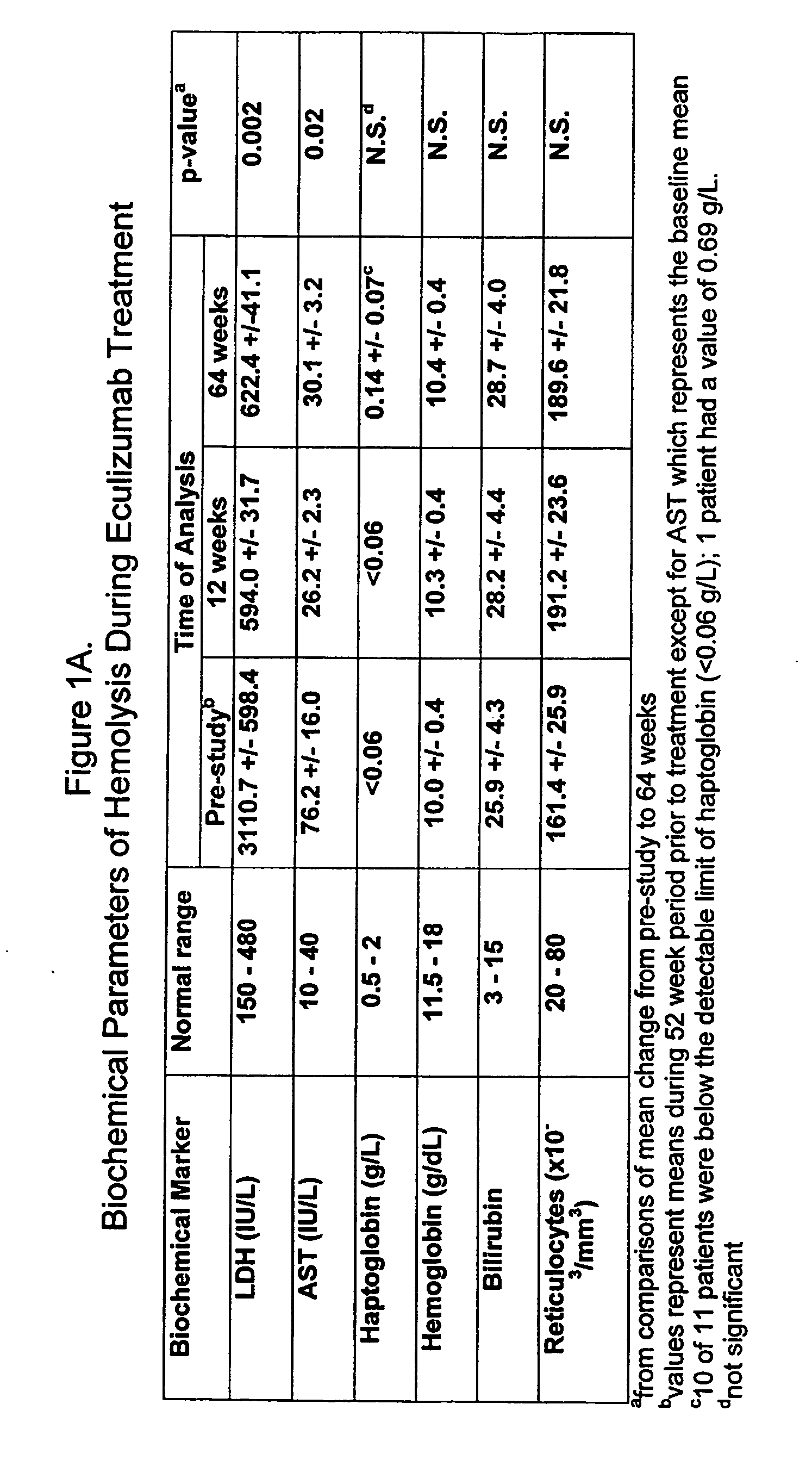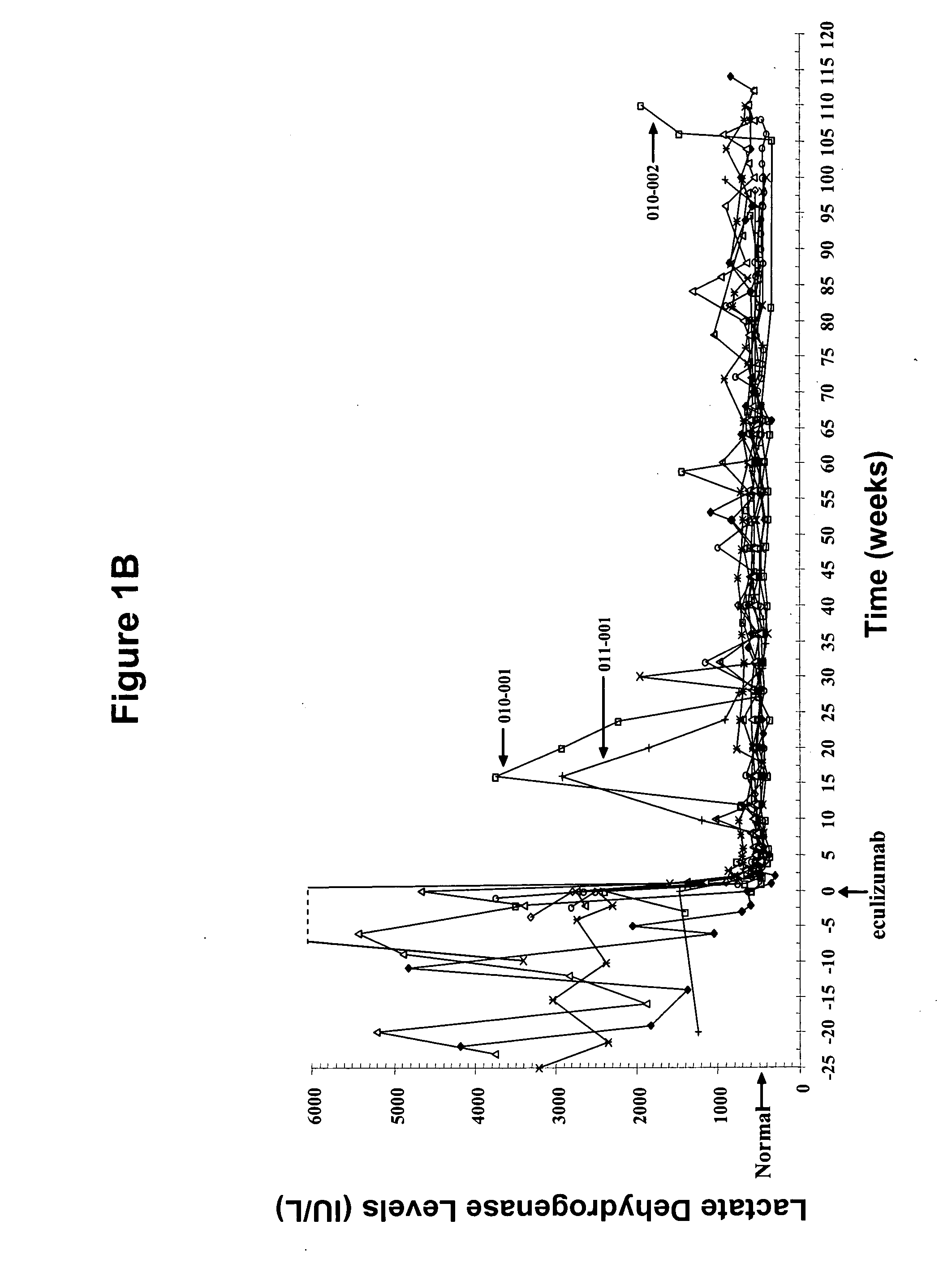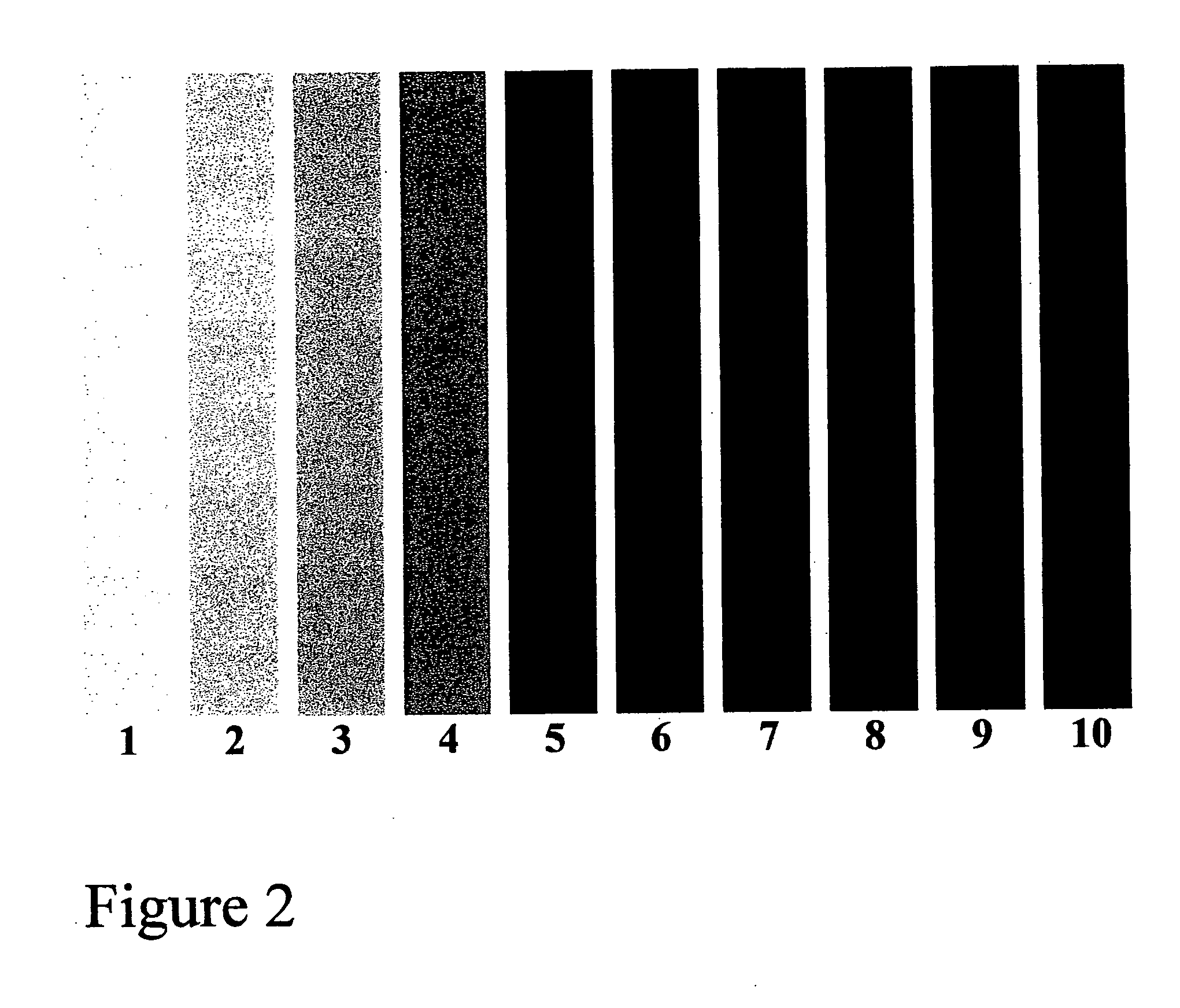Methods of treating hemolytic anemia
- Summary
- Abstract
- Description
- Claims
- Application Information
AI Technical Summary
Benefits of technology
Problems solved by technology
Method used
Image
Examples
example 1
[0132] Eleven patients participated in therapy trials to evaluate the effects of anti-C5 antibody on PNH and symptoms associated therewith. PNH patients were transfusion-dependent and hemolytic. Patients were defined as transfusion dependent with a history of four or more transfusions within twelve months. The median number of transfusions within the patient pool was nine in the previous twelve months. The median number of transfusion units used in the previous twelve months was twenty-two for the patient pool.
[0133] Over the course of four weeks, each of 11 patients received a weekly 600 mg intravenous infusion of anti-C5 antibody for approximately thirty minutes. The specific anti-C5 antibody used in the study was eculizumab. Patients received 900 mg of eculizumab 1 week later and then 900 mg on a biweekly basis. The first twelve weeks of the study constituted the pilot study. Following completion of the initial acute phase twelve week study, all patients participated in an exten...
example 2
Description of Clinical Studies
[0148] The safety and efficacy of eculizumab was assessed in three separate studies including an 87 patient randomized, double-blind, placebo-controlled 26 week phase 3 study (Study C04-001), an ongoing 97 patient open-label 52 week phase 3 study (Study C04-002), and an 11 patient open-label 12 week phase 2 study (Study C02-001; this study had two study-specific extension studies [E02-001 and X03-001] totaling an additional 156 weeks). All patients successfully completing Studies C04-001, C04-002, or C02-001 / E02-001 / X03-001 were eligible to enroll in an ongoing open-label 104 week phase 3 extension study (Study E05-001) which is anticipated to enroll approximately 190 patients. The E05-001 study provides additional long-term safety and efficacy data of eculizumab in the overall population of PNH patients and includes the collection of thromboembolic event rates with eculizumab treatment across the pooled eculizumab treatment groups from the parent st...
example 3
[0175] Eculizumab, a complement inhibitor, was shown to reduce intravascular hemolysis and transfusion requirements in patients with PNH. Eculizumab-treated patients, as compared to placebo, showed an 85.8% decrease in intravascular hemolysis (as measured by LDH area under a curve, p12 cells / L at baseline to 2.05×1012 cells / L at 26 weeks (p12 cells / L to 1.16×1012 cells / L) (FIG. 11). The increase in PNH RBC mass was associated with an overall increase in hemoglobin levels in eculizumab-treated patients relative to placebo (p25 units / year, p<0.001 for each stratum) (see Table 9). Significant reductions were observed in intravascular hemolysis (LDH) in eculizumab-treated patients that achieved transfusion independence (p<0.001) as well as those that did not (p<0.001) (see Table 10). Taken together, these data demonstrate that effective control of intravascular hemolysis in PNH with eculizumab results in a substantial improvement in anemia, as evidenced by an increase in endogenous RBC ...
PUM
| Property | Measurement | Unit |
|---|---|---|
| Fraction | aaaaa | aaaaa |
| Fraction | aaaaa | aaaaa |
| Fraction | aaaaa | aaaaa |
Abstract
Description
Claims
Application Information
 Login to View More
Login to View More - R&D
- Intellectual Property
- Life Sciences
- Materials
- Tech Scout
- Unparalleled Data Quality
- Higher Quality Content
- 60% Fewer Hallucinations
Browse by: Latest US Patents, China's latest patents, Technical Efficacy Thesaurus, Application Domain, Technology Topic, Popular Technical Reports.
© 2025 PatSnap. All rights reserved.Legal|Privacy policy|Modern Slavery Act Transparency Statement|Sitemap|About US| Contact US: help@patsnap.com



